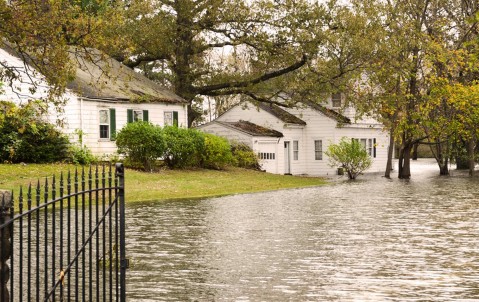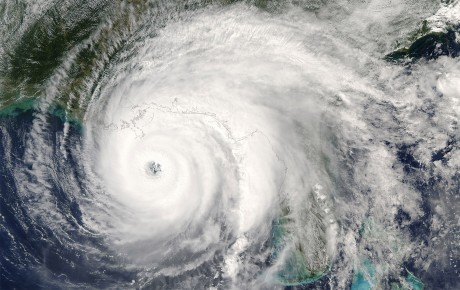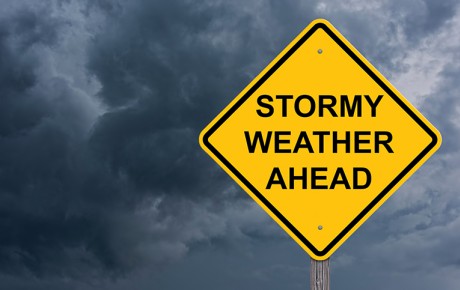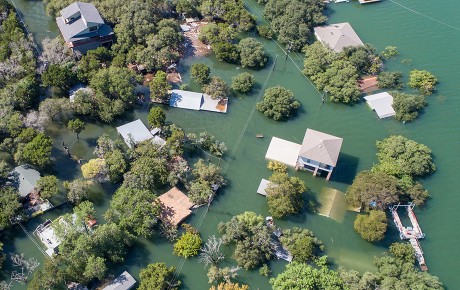
A high water mark for the NFIP?
Could the National Flood Insurance Program’s reauthorisation be the trigger for an expansion of the private flood insurance market?
In September, the US National Flood Insurance Program (NFIP) will come before the US Congress for its rolling five-year reauthorisation. Currently running a growing debt of around $24bn, the political noises from Washington suggest the Trump administration is unlikely to accept a continuation of the status quo. Expected changes to the NFIP means the private flood insurance market should be optimistic about the opportunities ahead, says Daniel Alpay, Hiscox’s Flood Line Underwriter. “I’ve a real sense that the barriers to entry to US flood insurance are being lifted to the private market. The federal government has realised the current situation can’t go on and that it can’t solve the flood insurance issue on its own.”
This balancing act of running a self-sufficient insurance programme whilst ensuring affordability for insureds is the major conflict that the NFIP has struggled to overcome.
Years of flood losses
Set up in 1968 in response to the insurance industry’s exclusion of flood from homeowners’ policies, the NFIP was created to provide affordable flood insurance, improve flood plain management and develop flood maps. Largely intended to be self-funding through premiums raised from policyholders, this funding balance was upset in 2005, with major losses following the flood devastation wrought by Hurricanes Katrina, Rita and Wilma, and again in 2012 when Superstorm Sandy hit, while 2016 saw it plunge further into the red, following the third largest year of flood claims to date.
These catastrophic losses exposed the NFIP's central flaw: the inadequacy of the premiums it charges. These are kept artificially low to ensure that low to middle income earners who live in flood exposed areas are able to afford cover. This balancing act of running a self-sufficient insurance programme whilst ensuring affordability for insureds is the major conflict that the NFIP has struggled to overcome. Other funding issues include inadequate funding for flood mapping which again means that many policy holders are paying much lower rates than the actual risk demands.
This mismatch between the cost of risk and the premium collected has been a major driver behind the NFIP’s current $24bn debt. The NFIP’s response has, says Alpay: “flipped between trying to cut back the coverage it provides in order to minimise its losses, to trying to broaden the coverage so more people buy flood policies, in an effort to bring in more premium to the pool. Clearly none of this has worked.”
It’s this funding imbalance and the impact that's had on the federal budget that accounts for Washington’s desire to reduce the NFIP’s expenses as it approaches its reauthorisation. Trump’s first budget includes a proposal to cut $190m off the cost of the Flood Hazard Mapping Program.
Between 2008 and 2012, a number of NFIP lapses and short term extensions led to extensive disruption to the mortgage market, where lenders demand owners buy flood cover for homes in high-risk areas, before finally being reauthorised. So is it likely something similar could happen this time? “The reauthorisation probably won’t be done by September because people are too far apart, although it could possibly be extended without lapsing,” says Alpay.
G. Michael Sloane, Senior Executive Vice President and Chief Marketing Officer for Wright Flood – the largest provider of federal flood insurance (NFIP) policies in the US – takes a different view. “I'm cautiously optimistic that the NFIP will not experience a lapse as seen previously; however, how long the term of reauthorisation may be is unknown.” Some lawmakers are calling for a ten-year term to prevent uncertainty within the housing and insurance markets.
Without historical claims data, private companies do not have all the data or experience to build robust markets, but must rely on their ongoing experience.
Potential NFIP changes
Whenever the reauthorisation happens, what is clear is that there will be changes to try and put the NFIP on a more sustainable footing. Ideas suggested include growing the premium pool through a greater requirement to buy flood insurance for homeowners in flood areas; updating its flood mapping to enable it to charge more accurate premium levels; as well as phasing out the practice of ‘grandfathering’, which applies where a policy holder in a flood zone is reassessed by the NFIP as a higher risk but can keep their existing premium level.
Sharing more risk with the private market is also high on that list of reforms. There is draft language in circulation for the reauthorisation that addresses mortgage lenders’ acceptance of private flood policies and those policies being moved back to the NFIP without homeowners losing their subsidised rating, Sloane says. This change could be significant, says Alpay. “In 2016, legislation was drafted which allowed people to dip in and out of private insurance without losing their ‘grandfathering’ and subsidised rates, but Congress decided not to take it up.” But if federal lawmakers were to allow that this time it could give the private market a huge boost. Other changes that would help the private market include greater access to claims data from the Federal Emergency Management Agency, says Sloane. “Without historical claims data, private companies do not have all the data or experience to build robust markets, but must rely on their ongoing experience.”
Private market can help drive up demand
There is though a growing acceptance on both sides that the NFIP realises it can’t fix the problem on its own and that the private insurance market will have a greater role to play. “The Director of the NFIP has stated the plan is to double the number of flood policies in the US from just over 5 million to 11 million by 2023. He thinks that will only happen with the private market’s help, believing that if the private market promotes flood insurance then more people are likely to buy cover, both from private insurers as well as the NFIP,” says Alpay. It’s a view endorsed by Sloane who feels that the private market can help educate homeowners that everyone is potentially at risk from a flood event. He says: “Gradually that [homeowners turning to the private market] may happen as property owners become educated about flood insurance alternatives that offer better cover.”
With plenty of potential premium out there – only 4 million out of 135 million US households currently buy flood insurance – Alpay believes the private market can create more bespoke products, develop better flood mapping in areas where the NFIP hasn’t been successful in getting homeowners to buy cover, as well as providing straightforward flood products to add to existing cover for homeowners. “If you’re in a low risk area and don’t have to buy flood cover, you currently wouldn’t because you have to go through a tedious process to buy a standalone policy with probably a relatively high minimum premium and extra fees. But the private market could simply bolt on an endorsement to your homeowner’s insurance for say $50. Simple.”
The opportunity for the private flood insurance market is beholden to what the US government wants to do with the NFIP.
A market of last resort?
Whatever the result of the negotiations around the forthcoming reauthorisation, no one is in doubt that that there will always be a need for a federal-backed flood insurer. Could that simply be as a market of last resort for people who can’t get affordable private insurance, or as a more mainstream provider of flood cover alongside a resurgent private market? It all depends on the direction of political travel, concludes Alpay. “The opportunity for the private flood insurance market is beholden to what the US government wants to do with the NFIP.” By the 30 September, the industry should be closer to finding out.



